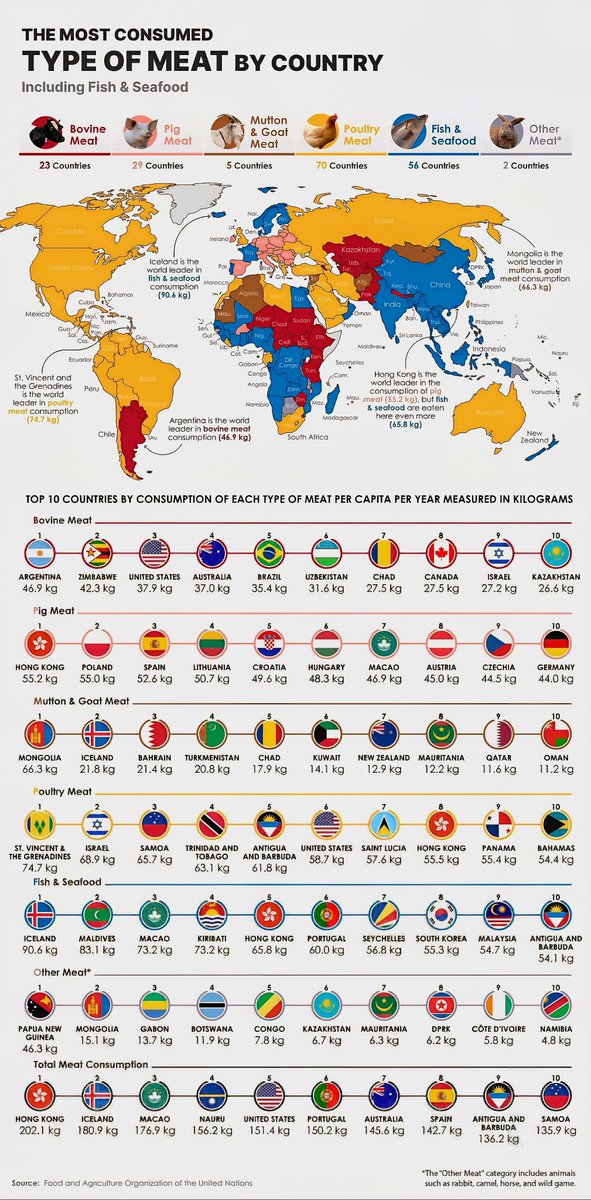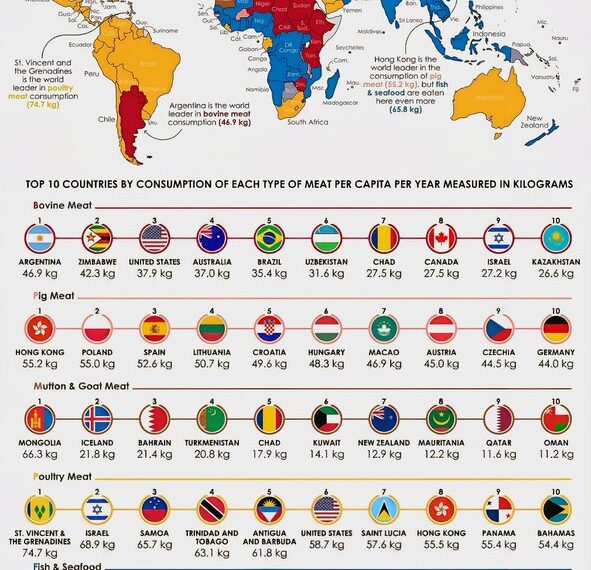Select Language:
The Most Popular Meat Choices Across Different Countries in 2025

1. Beef: The Crowned Favorite in Argentina and the United States
In 2025, beef continues its reign as the most preferred meat in countries like Argentina and the United States. Known for their rich beef industries, these nations boast a deep-rooted culture of cattle ranching and steak-loving populations. Argentina’s world-famous asado traditions make beef a staple, while in America, the obsession with burgers and steaks keeps beef at the top of the list. The high global demand also fuels sustained production, making beef a central part of many diets.
2. Pork: A Staple in China and Germany
Pork claims the top spot in nations such as China, the largest consumer of pork globally, and Germany, where hearty dishes like sausages and schnitzels are favorite staples. China’s vast population and longstanding culinary traditions have built an enduring preference for pork, which appears in nearly every meal. Germany’s pork-centric cuisine, deeply tied to regional recipes like bratwurst and roasts, keeps it as the go-to meat for many households.
3. Chicken: The Global Favorite for Versatility and Affordability
Chicken remains the universal powerhouse in 2025, topping charts in countries like India, Brazil, and Australia. Its popularity stems from its affordability, adaptability, and health benefits, making it a preferred choice across different cultures. In India, chicken curry is a common household staple; in Brazil, grilled chicken is a barbecue favorite; and in Australia, diverse preparations keep chicken consumption high. Its neutral flavor allows it to fit seamlessly into numerous culinary traditions worldwide.
4. Lamb and Mutton: A Cultural Mainstay in Middle Eastern and Mediterranean Countries
Lamb and mutton continue to be dominant meats in Middle Eastern countries such as Saudi Arabia and Iran, as well as several Mediterranean nations like Greece and Lebanon. Traditional dishes such as kebabs, stews, and roasted lamb showcase the significance of these meats in cultural celebrations and daily cuisine. Their rich flavor and historical importance mean that lamb and mutton remain central to local food identities.
5. Seafood: The Leading Choice in Japan and Norway
In countries with extensive coastlines and access to fresh ocean produce, seafood is king. Japan, renowned for sushi and sashimi, and Norway, famous for its salmon and cod, lead the way. Seafood’s health benefits and the sustainability efforts in these nations have elevated its status, making it a primary protein source. In Japan, seafood is woven into the fabric of tradition, while Norway’s fishing industry sustains its seafood-centric diet.
6. Turkey and Game Meats: Exclusive Favorites in Certain Regions
In Turkey, poultry, especially turkey and other game birds, are prevalent during festivities like national holidays and religious celebrations, reflecting cultural preferences. In parts of Africa and Eastern Europe, game meats such as venison or wild boar are reserved for special occasions and traditional ceremonies, showcasing regional hunting and culinary customs.
7. Plant-Based Proteins: Rising in Popularity in the United States and Europe
While not meat itself, plant-based proteins like tofu, tempeh, and meat alternatives have gained significant traction in 2025, especially within the United States and European countries. Driven by concerns over health, environmental sustainability, and animal welfare, these options are increasingly integrated into mainstream diets. Major food corporations have expanded their offerings, making vegetarian and vegan dishes more accessible than ever.
In Summary: As global palates evolve, so does meat consumption, reflecting cultural practices, economic factors, and health trends. While traditional favorites like beef, pork, and chicken continue to dominate, emerging preferences for seafood and plant-based proteins signal a promising diversification in worldwide diets.
Note: All data is based on 2025 trends and recent industry reports, capturing the dynamic landscape of global meat consumption.







